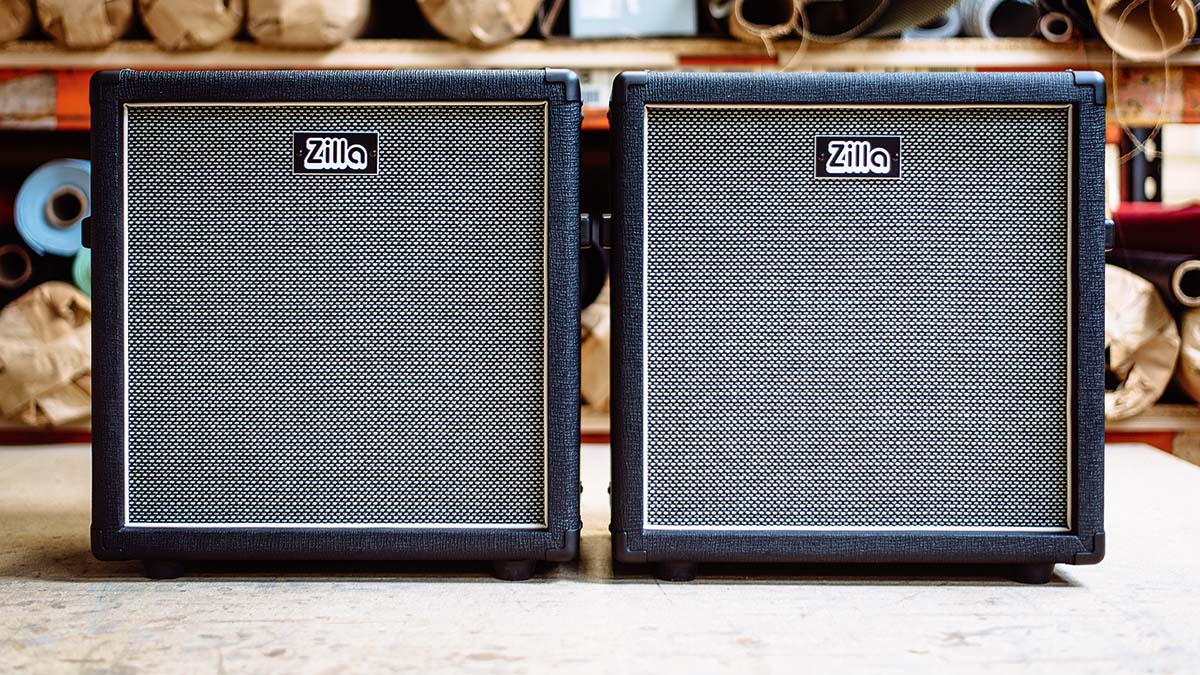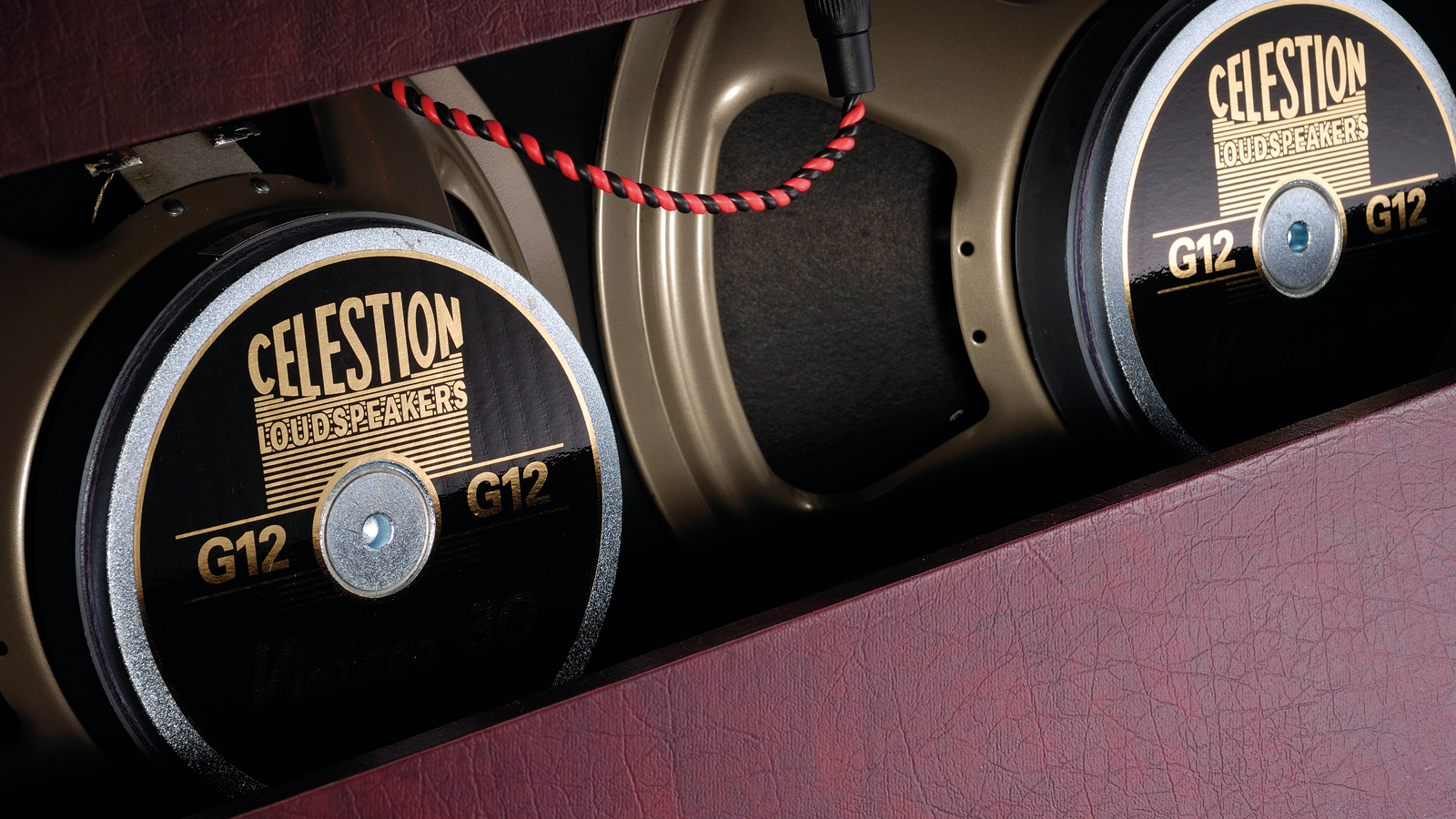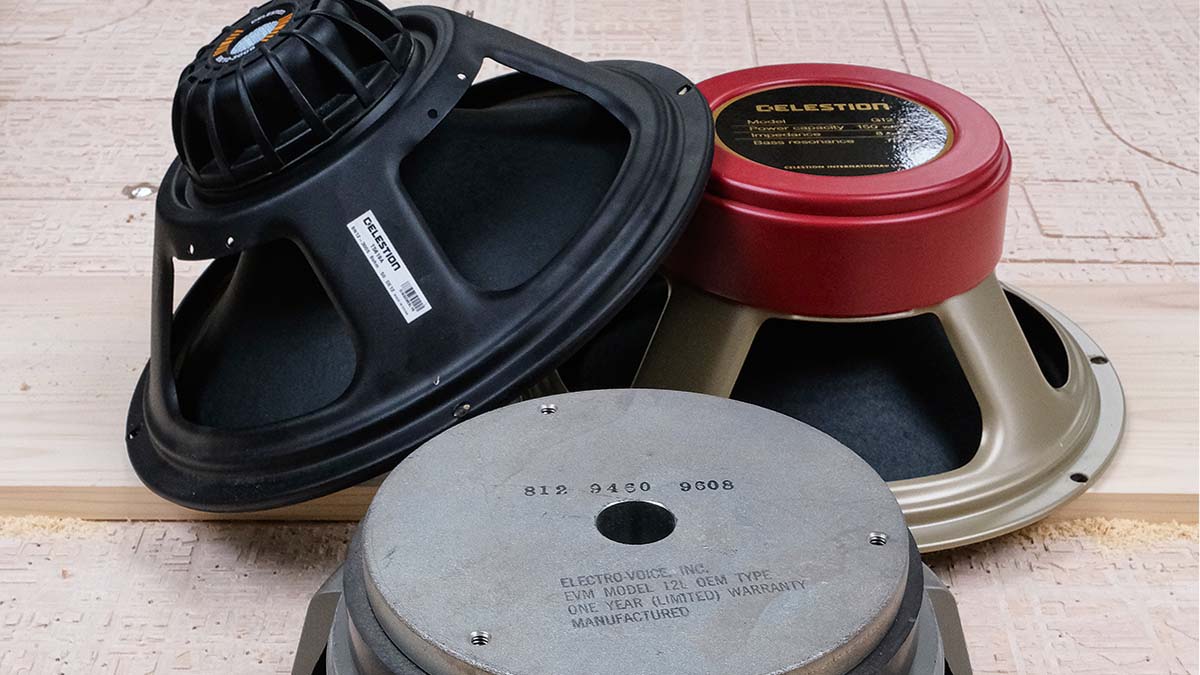Pedalboard not performing? Try changing your amp speaker
To get the best out of your dream pedalboard, you might have to rethink your guitar amp's speakers

While it’s true I spend half my time talking about getting the right guitar speaker and cab for any given situation, this is even more relevant when effects pedals are a key factor in your rig. Here, we’ll examine how different speakers and cab layouts can maximise your results.
Let’s start by looking at the individual drivers (from now on I’ll refer to them as speakers, and speaker cabinets as cabs since they’re more widely used terms). I’m going to loosely break these down into three groups: low-powered, high-powered, and full-range flat response (FRFR) speakers.
Low-powered speakers, let’s say up to around 60 watts, often colour the sound a little more, by which I mean they will introduce more individual tonal characteristics into the sound. This can be great for players with a more old-school approach, driving their amp hard and achieving more distorted tones.
Lower-powered speakers often compress at comparatively lower volumes, too, which can also be desirable for a lot of players but will introduce more inconsistency. They tend to sound different for home use, band practice and big gigs, as each will likely be at a different volume level – so these speakers are not ideal for a clean pedal platform.
Higher-powered speakers offer less of this colouring of the sound, so are often favoured by players looking to create a clean platform, allowing optimum results from effects pedals.

These speakers are usually more consistent between the situations in which they’ll be used – be it bedroom, band practice or various-sized gigs – or at least the amount of colouring of the sound will stay more similar as the jump in volume tends to be lower when compared with the speakers’ maximum output rating.
In short, a higher-powered speaker will give you a similar result because high-powered amps give you more clean headroom as you’re often only using a small proportion of what the speaker is capable of. This clean base can be great for using effects pedals.
Get The Pick Newsletter
All the latest guitar news, interviews, lessons, reviews, deals and more, direct to your inbox!
What the FRFR?
Finally, FRFR speakers are really designed for use with modeling amps. They take the idea of a clean platform one step further, completely removing the tonal characteristics of the speaker and allow the player to select their desired speaker sound and add that in using their modelling amp.
Effectively, it’s a speaker that will allow the transfer of electrical energy into pressure waves without adding anything of its own. This option is ideal when building a clean pedal platform, but often the results can seem a little sterile.
This is why a lot of players who use effects pedals as a key ingredient in their sound, opt for a higher-powered speaker, one that will ideally limit the colouration of their sound but retain a certain life and musicality that the FRFR speakers can lack. The EVM12L is a perfect example: high powered at 200 watts, very musical, but a speaker that will not make its mark on the sound like a 20-watt Greenback will.

When it comes to speaker cabinets themselves, for this situation there aren’t any real rules – just go for something you like the sound of. Closed-back cabs can give you added control, though they can lack a certain ambience, but not so much so that it can’t be added back in with a touch of reverb from your pedalboard.
You don’t want to go too big as the low-end may get a little boomy and add too much to the sound… and yet you probably don’t want to go too small and limit the low-end, either, even in a smaller ported cab. Although it is often practical to use a single cab, for players who like to create full stereo or wet/dry/wet rigs then multiple cabs are a very good idea – ideally spaced apart from each other to maximise the effect in the room.
Low-powered speakers are among some of my favourites due to how they interact with the guitar, amp and player
To sum up, low-powered speakers are among some of my favourites due to how they interact with the guitar, amp and player. But for a lot of players who want to use effects, this colouring of the sound can get in the way. Often more old-school rigs use a boost, wah, maybe a few modulation pedals, but these effects tend to be to add a little bit, rather than provide a basis to sculpt whole new sounds.
Think Jimi Hendrix with a Fuzz Face, wah pedal and pushed Marshall stack, or Eddie Van Halen using a phaser pedal – both Greenback users with amazing sounds, but without the extra dimension created by those 100-watt Fane Crescendos used by David Gilmour and his array of fuzz, modulation and reverb/delay pedals.
“An all-in-one power solution, on or off the grid”: D’Addario’s rechargeable XPND Pedal Power promises to make your ’board more portable – but only if you daisy chain
“Our new power supplies are about as state-of-the-art as you can get”: How Truetone’s game-changing 1 Spot Pro series is continuing to provide pro pedalboard power to the masses with the new CS11 and XP5










